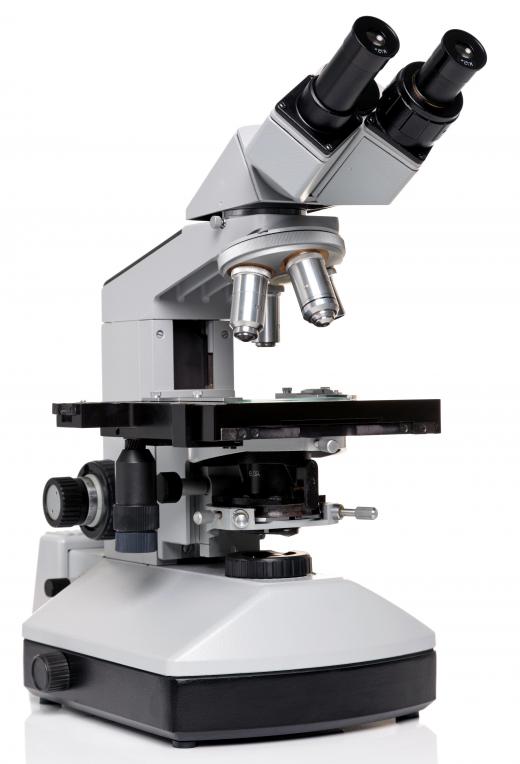What is a Compound Microscope?
A compound microscope is a microscope fitted with two or more convex lenses. The high magnification produced by these lenses together enables a detailed study of micro-organisms, cells and tissues. These types of microscopes are therefore widely used in scientific and medical research.
Zacharias Janssen, a Dutch spectacle maker, invented the compound microscope in 1590. Galileo unveiled his version in 1610. Several other scientists and inventors later helped refine its design and working capabilities.

The basic design of a compound light microscope consists of convex lenses fitted at either end of a hollow tube. This tube is fitted on an adjustable, rotary nosepiece. There is an adjustable stage under the nosepiece; specimen slides are placed or fitted on this stage for observation through the lenses. The stage has a window or hole in it through which a light source can illuminate the specimen under observation.

The light source can be a mirror reflecting natural light or a lamp in the base. The illuminating beam passes through the stage window and through the specimen. The light brightens the area around the specimen, making the specimen stand out in contrast. The level of contrast is controlled by controlling the amount of illumination. A brighter or dimmer effect is achieved by opening or closing an iris diaphragm under the stage, or by adjusting the height of the lamp.

The upper lenses of the compound microscope, the ones closer to the viewer's eye, are the ocular lenses or the eyepiece. Monocular microscopes have one eyepiece, and binocular ones a double eyepiece. Trinocular versions have a double eyepiece and a camera-fitting arrangement.
The objective lenses are the lower lenses closer to the object being viewed. There can be three or four different ones located on the rotary nose-piece of a compound microscope. The nosepiece is rotated to select the objective lenses that offer the magnification most suited for a particular specimen.

The four objective lenses are the scanning power objective, the low power objective, the high dry objective and the oil immersion objective. They have magnifications of 4X, 10X, 40X and 100X respectively. The ocular lenses usually have a magnification of 10X.
To get the total magnification factor, the eyepiece magnification is multiplied with the objective magnification. So, with 10X ocular lenses and 100X objective lenses, a magnification of 1000X is achieved. This means, a viewed object is magnified 1000 times its actual size. Higher magnifications are also possible.
When an object is in focus, the objective lenses form a real, inverted image of the object at a point inside the principle focus of the ocular lenses. The ocular lenses then treat this inverted image as the object and produce an upright image of it. This image is the enlarged one seen by the observer.
AS FEATURED ON:
AS FEATURED ON:














Discussion Comments
Thank you for the info. I needed it.
It helped with my Applied Engineering project on optical instruments.
@jillt -- Other types of microscopes include dissecting microscopes, scanning electron microscopes, and transmission electron microscopes. Dissecting microscopes have lower magnification and are powered by light. Larger objects can be viewd through them in three dimensions, rather than just two. Scanning electron microscopes, also called SEM microscopes, use electrons to create three-dimensional images with high resolution and magnification. They also have a larger depth of focus and can provide information about what the specimen is made of. Transmission electron microscopes, or TEM microscopes, are used in pathology and in the study of crystals. They provide very high resolution images, however the specimens require a lot of preparation.
I understand that compound microscopes are important in fields where minute details need to be seen, like microbiology, genetics, and even forensics. What other kinds of microscopes are there though, and what are they used for?
Post your comments